Edmonton Valley Line LRT ridership falls far short of estimates
- Reality Check
-
Daryl DC (SfS Founder)
- October 26, 2025
Canada’s most recently opened light rail transit line has failed to meet its ridership targets.
The numbers are in: after two years in service, the $1.8 billion Valley Line Southeast LRT in Edmonton is carrying about 9,000 riders per day. This is less than one-third of estimates, which were for the LRT to be carrying 31,500 riders on opening day, and 42,000 riders per day by 2044.
These ridership numbers are posted publicly by the Edmonton Transit Service Advisory Board (ETSAB) in their “Branch Highlight Reports” every month. While Edmonton-based news media have been quiet about Valley Line LRT ridership since the southeast leg opened in November 2023, we are taking an interest due to the resurgence of the SkyTrain vs LRT debate here in Surrey, British Columbia.
Edmonton – Valley Line Southeast LRT Ridership
from Edmonton Transit Service Advisory Board (ETSAB) data
No Data Found
Why is Valley Line LRT ridership so low?
We know that this outcome is not explained by COVID-19, as system-wide transit ridership in Edmonton has exceeded pre-pandemic levels.
And, while we are not from Edmonton and not aware of all the day-to-day factors that influence transit ridership there (such as on-board safety), we do know from an admission in the ETSAB reports that the Valley Line makes up only about 15.5% of Edmonton’s total LRT system ridership, even though it now provides 35% of the system’s 37.4km route length and 40% of the system’s stations.
That means that after 2 years, the Valley Line has not attracted ridership levels comparable to the original Capital and Metro LRT lines.
We believe that the failure to reach original ridership projections was influenecd by the following three factors:
1. European tramway aesthetics prioritized excessively in design
Dorian Wandzura, Edmonton transportation general manager in 2015
Metro LRT to cause major traffic delays – CBC, Sep 2015
When designing the Valley Line, Edmonton city planners emphasized a difference in design philosophy compared the original system, wanting to follow a more European tramway-like design and branding the system as a “low-floor urban LRT”.
As a result, the system adopted design decisions that have resulted in slower running speeds and higher travel times than the existing LRT lines; such as a higher degree of street-running segments, including running at-grade on city streets through the downtown core (as opposed to the existing LRT lines that run through a grade-separated subway tunnel).
The Valley Line also has no crossing arms, gates or bells at road intersections; as a result, trains are currently required to slow down while passing over intersections, and may occasionally have to stop at red lights.
It should be noted that the Valley Line’s design principles were similar to those adopted for the now cancelled Surrey-Newton-Guildford LRT.
2. Development prioritized over shorter travel times
The city has also admitted in the past that the Valley Line LRT is “designed for development”, and that development considerations were prioritized ahead of reducing travel times for transit users.
This included a deliberate decision to take a longer route down neighbourhood streets near the Strathearn stop to serve a redevelopment site, instead of taking a more direct/diagonal route down Connors Road towards Mill Woods.
3. Failure of Strathearn redevelopment that resulted in longer route for LRT
Unfortunately, the same redevelopment plan of the Strathearn Heights neighbourhood was stalled in 2019 after developers backed out on the City of Edmonton unless it would provide $13 million in tax breaks to aid construction—a request that has since not materialized.
(Of note: this would not be dissimilar from the tax incentives that were used by the City of Portland to attract redevelopment to areas around the MAX Light Rail, after it became evident that building the LRT had not been enough of an incentive by itself.)
If completed, the development would have been constructed largely in-tandem with the LRT line, with most of the new housing units ready in time for opening day. Instead, with the development stalled, the neighbourhood has retained its existing lower-density housing configuration.
This has resulted in a double-whammy to ridership numbers on the Valley Line:
- First, the stalling of the transit-oriented development plan means that the Valley Line is losing out on a meaningful chunk of ridership that could have resulted from residents in the higher-density neighbourhood redevelopment hopping on the LRT.
- Second, the longer route of the LRT increases travel times for all riders boarding further down the line, which may be having an impact on the line’s ability to attract and retain prospective riders looking to switch from driving.
All of these factors appear to have combined for an LRT line that has not significantly reduced travel time over previous express bus lines—and as a result, has not attracted a large new number of transit riders in order to meet modest opening-day projections of 31,500 riders per day.
Although Edmonton is in the process of extending the Valley Line to the West Edmonton Mall and this may help with ridership, for now the Valley Line has become the only rail rapid transit line in Canada to have failed to attract at least 10,000 riders per day within its first two years.
Reality Check
Reality Check is the online blog run by the founder of SkyTrain for Surrey, a BC-based community organization that has advocated for the expansion of the Vancouver SkyTrain system, including our successful advocacy for the under-construction Surrey-Langley SkyTrain extension.
Media Contact: Daryl Dela Cruz – Founder, SkyTrain for Surrey ・ Phone: +1 604 329 3529, [email protected]
